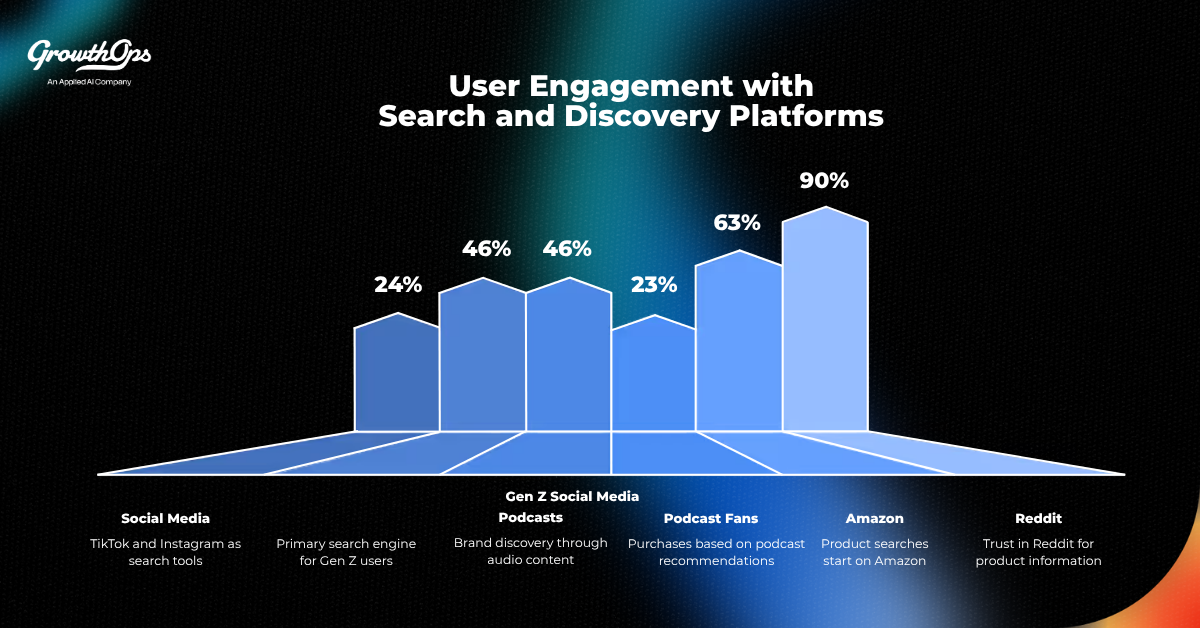Last year, I wrote about a concept I called "Search Everywhere Optimisation" - the idea that as search engines began crawling and incorporating more diverse sources into their search engine results pages (SERPs), brands needed to ensure their presence across every possible touchpoint.
The premise was simple: Google wasn't just showing ten blue links anymore. Search results were becoming rich ecosystems featuring social media posts, Reddit discussions, Wikipedia entries, YouTube videos, images, infographics, and countless other content formats. To maintain visibility, brands had to optimise their presence across all these platforms - not just their own websites.
Search Everywhere Framework

In my Campaign Asia article, I outlined six critical channels where this optimisation needed to happen:
Search Engines remained the foundation, but with evolving algorithms prioritising E-E-A-T (Experience, Expertise, Authoritativeness, Trustworthiness) and comprehensive content that addresses user intent.
Social Media has transformed into powerful search tools, with 24% of users turning to platforms like TikTok and Instagram for answers, and 46% of Gen Z using them as primary search engines.
Podcasts were driving brand discovery, with 46% of listeners learning about new brands through audio content and 23% making purchases based on recommendations from podcasts.
Marketplaces like Amazon and Shopee have become search-first destinations, with 63% of online shoppers starting their product searches on Amazon rather than Google.
Forums and Communities like Reddit and Quora were building trust through authentic conversations, with 90% of Reddit users trusting the platform to learn about products - often more than Google itself.
The strategy was clear: be everywhere your audience might search, in every format they might consume.
The Generative AI Parallel: Same Behaviour, New Stakes
Fast forward to today, and I'm observing something fascinating: generative AI engines behave remarkably similarly to traditional search engines in how they source and synthesise information. They crawl the same diverse content sources - websites, social media, forums, marketplaces, and multimedia content - to build their understanding of brands and topics.
But here's the critical question that's been driving my recent research: Can optimising all these traditional platforms actually impact how generative AI engines understand and represent your brand?
The answer, based on my ongoing experiments, appears to be a resounding yes - but with important nuances.
Testing the AI Visibility Hypothesis
I've been running controlled experiments to understand exactly how content optimisation across different platforms influences AI-generated responses. The testing framework involves three strategic tracks:
Track 1: Technical Foundation
Ensuring AI bots (GPTBot, PerplexityBot, ClaudeBot) can properly access, crawl, and interpret content through improved technical infrastructure. This includes clean canonical hierarchies, proper schema markup, and structured data that AI systems can easily parse.
One critical discovery: unstructured data leads to AI confusion. When contact information, product details, or service descriptions aren't properly structured, AI platforms often surface incorrect information - like showing business banking numbers for personal banking queries.
Track 2: First-Party Content Optimisation
Restructuring content into formats that AI systems prefer: H2-anchored Q&A blocks, conversational formats, and "direct-answer" structures. Instead of traditional marketing copy, we're creating content that answers specific questions in the exact format AI systems use to generate responses.
The key insight: AI systems don't just extract information - they synthesise it. Content structured as clear questions and answers, comparison templates ("Brand X vs Y"), and authority-backed references significantly increases citation likelihood in AI-generated responses.
Track 3: Third-Party Authority Building
Establishing external credibility through high-quality third-party mentions and backlinks that AI systems rely on to validate information. This involves strategic content placement across trusted platforms that AI systems reference when building their knowledge graphs.
The Multimodal Advantage
One of the most interesting discoveries is how AI systems respond to multimodal content. Pages that combine structured text with infographics, explainer videos, and rich media consistently perform better in AI citations. The key is providing proper schema markup (VideoObject, ImageObject) and transcripts that AI systems can process.
This aligns perfectly with the original Search Everywhere concept - but now we're optimising for AI comprehension rather than just human discovery.
Early Results and Implications
The preliminary data suggests that brands optimising across traditional "search everywhere" channels do indeed see improved representation in AI-generated responses. However, the optimisation approach needs to be AI-first:
Structured over stylised: AI systems prefer clear, structured information over creative marketing copy
Conversational over corporate: Content that matches natural language patterns performs better
Comprehensive over concise: AI systems favour detailed, authoritative content that provides complete context
Consistent over creative: Brand information must be consistent across all sources to avoid AI confusion
The Measurement Challenge
Traditional SEO metrics don't capture AI visibility. We're developing new measurement frameworks that track:
- Citation frequency across different AI platforms
- Quality and accuracy of AI-generated brand descriptions
- Traffic and conversion from AI referrals
- Brand sentiment in AI-generated responses
The goal isn't just visibility - it's ensuring AI systems represent your brand accurately and favourably.
The Automation Opportunity
Here's where the story gets really interesting: if optimising for AI visibility requires consistent, structured content across dozens of platforms and formats, how can brands possibly scale this manually?
The answer lies in the same technology that's creating the challenge: Agentic AI systems that can automate the optimisation process itself.
Imagine AI agents that can:
- - Automatically structure your content for optimal AI comprehension
- - Monitor how different AI systems represent your brand
- - Generate platform-specific optimised content at scale
- - Continuously test and refine your AI visibility strategy
This isn't science fiction - it's the logical next step in the Search Everywhere evolution.
Looking Ahead: The AI-Everywhere Era
We're transitioning from Search Everywhere Optimisation to AI Everywhere Optimisation. The platforms remain largely the same, but the optimisation strategies must evolve for both AI consumption and human discovery.
The brands that succeed will be those that understand AI systems aren't just new search engines - they're new media channels that require their own optimisation strategies, measurement frameworks, and content approaches.
The question isn't whether your brand will be represented in AI-generated responses - it's whether you'll control how that representation happens.
Learn how GrowthOps helps businesses navigate the Search Everywhere Era with impact.




